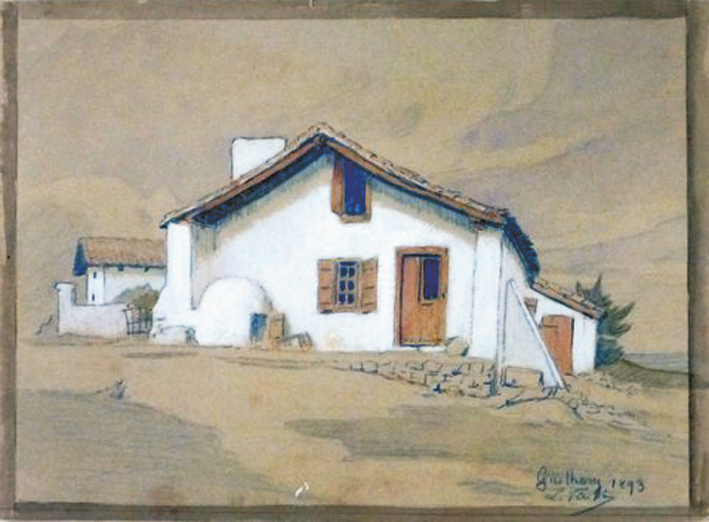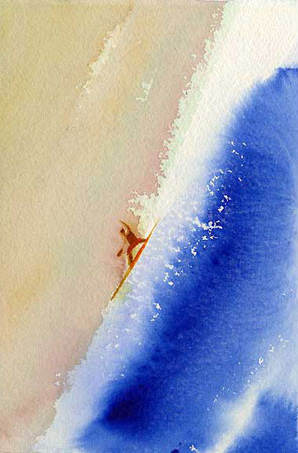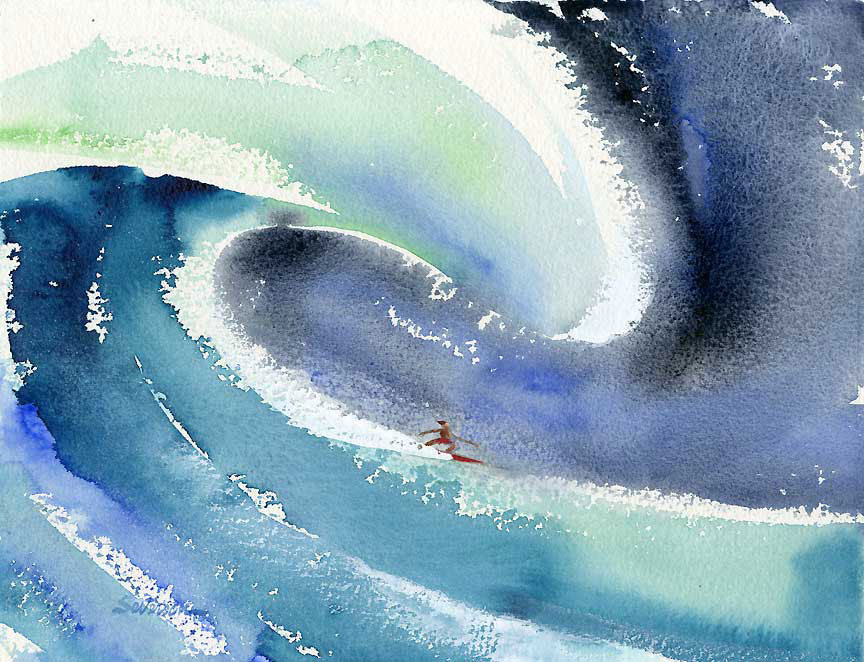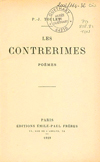| Ramiro ARRUE Basque farms on the cornice between Guéthary and Saint-Jean-de-Luz Oil on panel |
House in Guéthary Gouache, Watercolor and pastel 1893 Lucien VERITE |
|---|
Behind: Fisherman and fishmonger in Guéthary Poster paint, circa 1940 |
Down, Le port de Guéthary Oil on canvas cotton, 3D 2012 Eric BOURDON |
|---|
| With these ideas goes the current reform of this lodging. This is an attic with platform convirting it into an open duplex, which dialogues with
their two heights. 40 meters around in total, open to the sky and stars, in the last of the three floors of an old hotel who survived -as such- some decades since the late 1920's, in a very popular & appreciated area for the surfers, which still maintains the authentic air of unexplored sites, secrets, and giving it a gently blank soul. So, it's not strange its annual summer joyful celebration. Location fascinating, to contemplate by the roof's windows Fuenterrabia to the south, Biarritz to the North, and... the stars to the sky at night. Aside, near, a train stop is a witness of vital trips in motion. But here, a place of calm and serenity that favors the regeneration, a physical & emotional curative shelter, to qualify talks and dreams. As a cave luminous and sensual, like a protective and maternal uterus. |
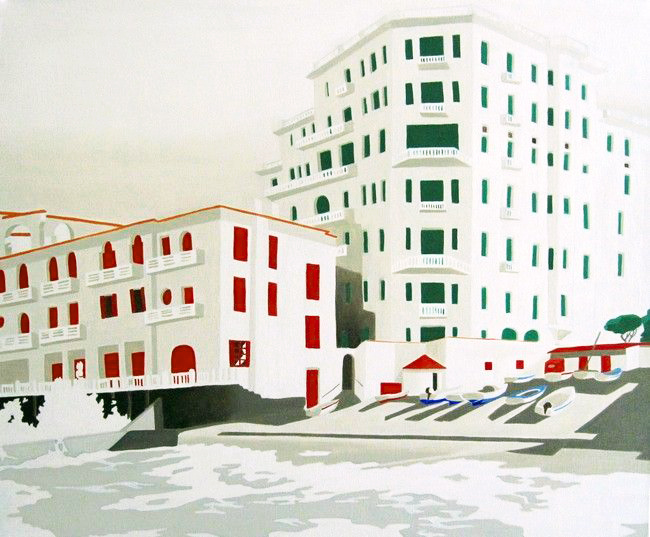 |
|---|
Right now in a slow reconstruction, treating their own textures of stone and wood, optimizing its space and light. We would to offer it during the summer of 2022 or 2023. We are in GUÉTHARY, in the coastal centre of the basque province of Labourd, Northern Basque country (in south-western France), in a building protected as an exceptional Architecture, as a singular style neo-labortaine exhibition, in the basque constructive tradition. |
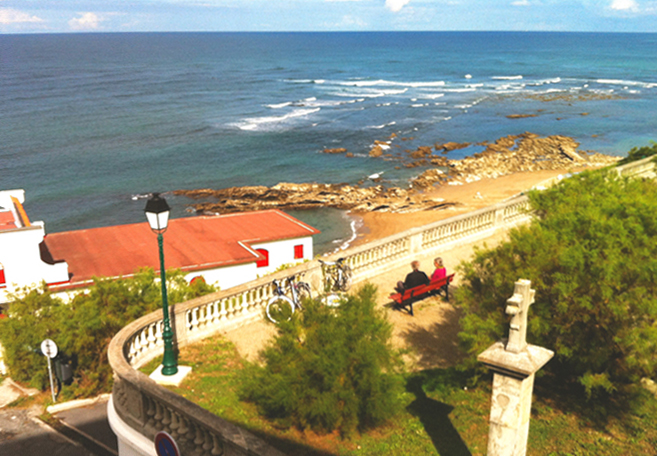 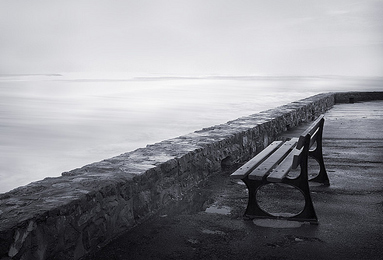 |
|---|
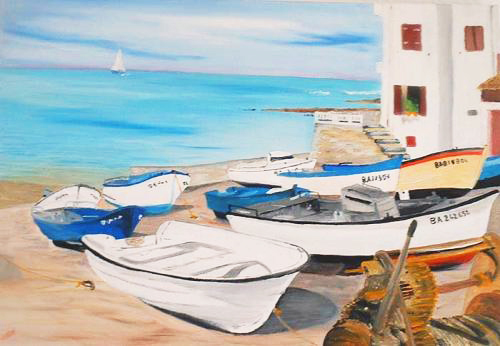 |
Guéthary it's a typical basque village, old whaling port, wide-open to the ocean, a destination for the first sea-bathers in the 19th century. Today, since the beginning of the 1970s, is impregnated by the surf culture, with their waves world-renowned by THE SURFEURS in reason of their different spots and his celebrated wave of Parlementia. The show is up to the effervescence with waves of more than 4 meters on certain days. Left: Port à Guéthary, by QUEM Behind: Match of basque pelota at the fronton of GUETHARY, by Josette TERREAU LAMELLE Right: Fisherman in Guéthary, by Ramiro ARRUE |
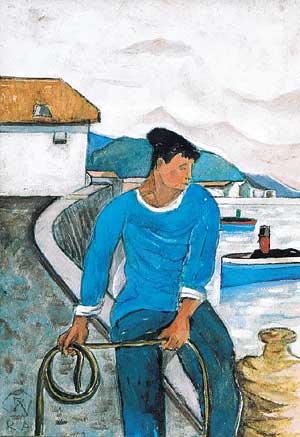 |
|---|
| Nestled in the heart of the city is the most steep beach of the Basque coast: the Alcyons beach, whose path leads to it is extremely steep. There we like the impression of being at the end of the world. Even today, in 2021, although Guéthary became trendy, the city preserves its authenticity & tranquility |
| Guéthary-site officiel |
Peintures about Surf, by John SEVERSON. Behind, left: Ron CROZI |
|---|
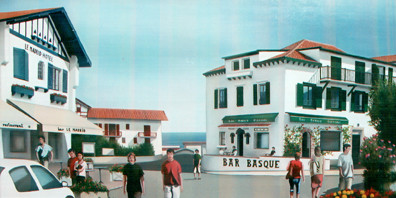 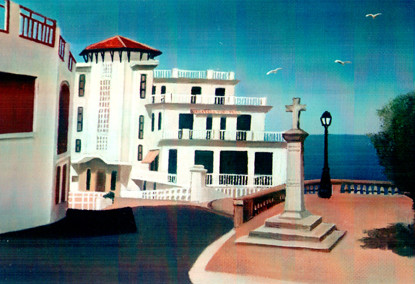 |
|---|
Paintings, up, by Pierre Rodriguez (behind, left, by RENAUD). Below, left, by Jacquotte GAIGNAULT. Both live in Guéthary. |
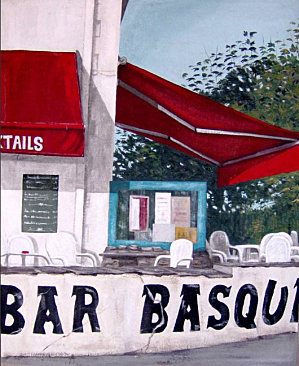 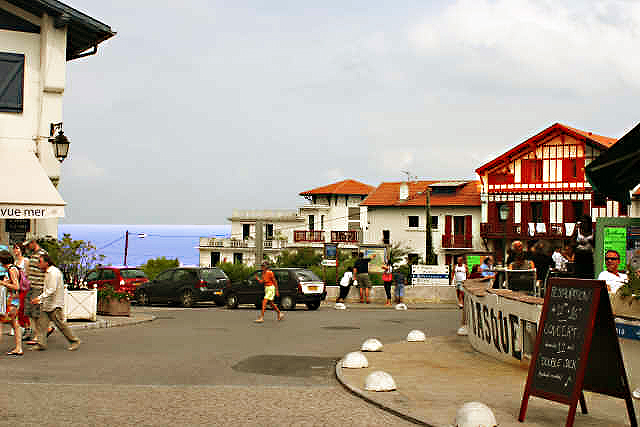 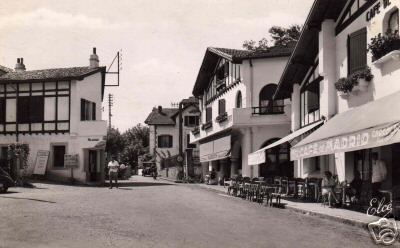 |
|---|
| At top right, le café Madrid, where the writer dadaïste Jacques Rigaut wrote "Et puis merde!" (un Cadavre exquis), in 1926, in the period when appeared in the avant-garde short-film of basque title "Emak Bakia" ('leave me alone" or "give peace"), by Man Ray. During pre-war years, in this small village «which never hadn’t been concreted», writers, musicians et painters illustrious were cherishing their souls in the summer: Saint-John Perse, Claude Debussy, Paul Klee, Wassily Kandinsky... On the right, Kandinsky and Klee in the courtyard of the café Madrid, during the summer of 1929 |
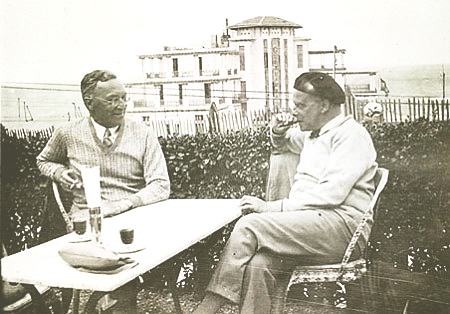 |
|---|
Special mention deserves the sculptor romanian Georges Clément de Swiecinski, who in accordance with the advice of his friend, Paul-Jean Toulet, he abandoned surgery, left Paris and settled in Guéthary where he devoted himself definitively to sculpture, since 1826, with 45 ans, until his death in 1958. His works are permanently featured in the local Museum. |
|---|
| But it must to underline to the poet Paul-Jean Toulet. Jorge Luis Borges considered him as one of most great writers of French literature. His Contrerimes, unclassifiable poems, are a masterpiece of humor and delicay, irony and lyrisme. Cynical and sentimental, caustic and tender, the extravagant Paul-Jean Toulet is the most unknown of the classics (Ses citations) |
The man who was looking for the happiness of the form, came in 1916 to Guéthary with his wife, with whom he married at 49 years old, until his death in 1920. Night owl and seductive, opium adict, he dies in Guéthary (in which he was buried), after a laudanum overdose, a substance next to the opium. He confessed that what he had loved the most in the world it was: "the women, the alcohol and the landscapes". He used to go to the Coffee Madrid -in right-, whose place has his name today, not far from where he lived. Friend of Debussy, and also of writers Francis Jammes (regular, at the same time, of Ravel) and Edmond Rostand -Cyrano-, who were domiciled in close localities, is still fondly remembered by those who visit his tomb, next to the church of the ville. |
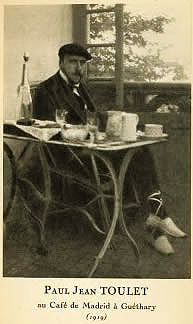 |
|---|
| From left to right: Medallion in the effigy of Toulet (tombale stone), by Swiecinski; The Monument -The three ladies of Albi-, due to Auguste Guénot's chisel -1931-, in front of his house. After, the residences of Paul-Jean Toulet, in Guéthary; Francis Jammes, in Hasparren; and Edmond Rostand -la Villa Arnaga-, in Cambo-les-Bains. |
|---|
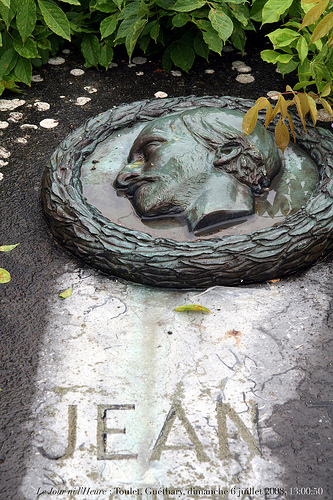 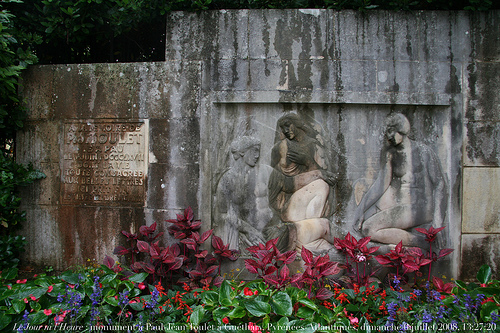 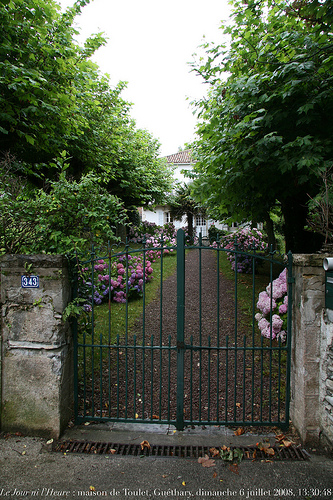 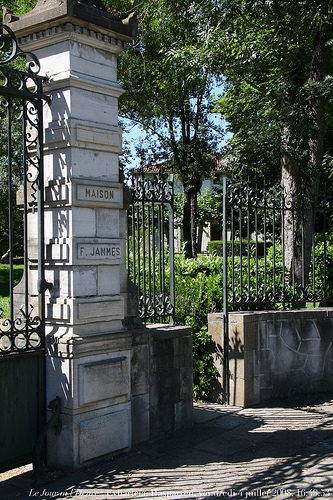 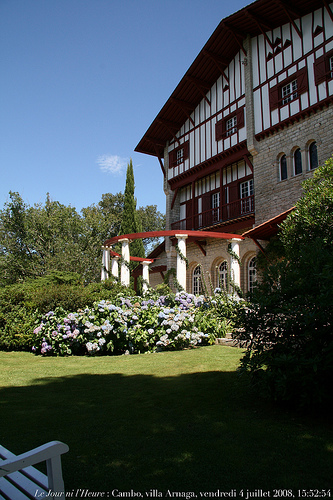 |
| At present, some illustrious residents, continue the wake of illustrious connections to this small town, as the mentioned painters, musicians as the pianists Katia and Marièlle Labèque, cookery masters as the Ibarboure
brothers (Philippe and Martin); or the writer Frédéric Beigbeder, resettled back into the enclave of his childhood (creator of terms -"fashismo"-, and provocative impenitent and imaginative -site-), who recommends, by the way (and we share and endorse), the route between SARE and AINHOA, neighbouring villages, for having the world's most beatiful landscapes -LePoint-...; The journalist and audiovisual producer Alain Gardinier, that has its company -Zuma- in the town...; the London painter and surfer Wilma Johnson, was captivated as well with the village, and came with her family... |
|---|
 |
| About the etymology of Guéthary: Getaria (Ipparalde) et sur sa jumelle Guetaria,
Getaria (Guipúzcoa). Its basque name is Getaria (from Catari, du latin Captare: voir, apercevoir –ou de Gaitar, en basque: gardien – ou de Gaitari, en gascon: guetter). Their inhabitants are the Guéthariars (les Guétariens are the summerers). Version contestée sur wikipedia espagne: "However, facing traditional hypotheses, in recent years archaeological finds have shed light on the matter. Recently there have been found in the town of Guetaria an evidence of the existence of a fish canning facility of Roman times, a type of establishment that was named Cetaria. It's noted that in this French Guétary an establishment of this type was also founded in the first century; por lo que actualmente parece bastante claro que el nombre de ambas poblaciones procede de esta palabra latina, ya que en el lugar donde siglos más tarde se fundaron estas poblaciones hubo con anterioridad una factoría romana." |

